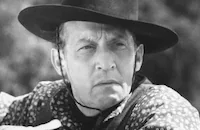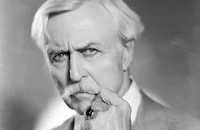Joan the Woman
Brief Synopsis
Cast & Crew
Cecil B. Demille
Geraldine Farrar
Raymond Hatton
Hobart Bosworth
Theodore Roberts
Wallace Reid
Film Details
Technical Specs

Synopsis
While fighting in France during World War I, an English soldier dreams of Joan of Arc, who tells him to die for France to atone for English sins against her. Then, he sees her become the leader of Charles VII's forces against the British, and capture Orleans from the enemy, thereby granting Charles his greatest victory. Shortly thereafter, however, Joan is betrayed by Eric Trent, her British lover, and she is captured, tried and burned at the stake. Inspired by this vision of Joan, the soldier, when he wakes up, sacrifices himself in a daring nighttime raid of German trenches.

Director

Cecil B. Demille
Cast

Geraldine Farrar

Raymond Hatton

Hobart Bosworth
Theodore Roberts
Wallace Reid
Charles Clary
James Neill

Tully Marshall
Larry Peyton
H. B. Carpenter
Lillian Leighton
Marjorie Daw
Stephen Gray
Ernest Joy
John Oaker
Hugh B. Koch
William Conklin
Walter Long
William Elmer
Emilius Jorgensen
Cleo Ridgely
Clarence Geldert
Fred L. Wilson
Ernest Butterworth
Crew
Wilfred Buckland
Mr. De Vall
Howard Ewing
Mr. Ford
William Furst
Miss Hoffman
Mr. Horwitz
Jesse L. Lasky
Jeanie Macpherson
Mr. Mayers
Mr. Mitchell
Leo Nomis
Mr. Palm
Cullen Tate
Mr. Tate
Alvin Wyckoff

Film Details
Technical Specs

Quotes
Trivia
Notes
The Cardinal Film Corp., which produced and distributed this film, was associated with Paramount Pictures Corp. and Famous Players-Lasky Corp. Sources conflict concerning the length of this film, listing it variously as ten, eleven and twelve reels. According to information in the copyright descriptions, the film included effects in color by "The Wyckoff Process." Cecil B. DeMille, in his autobiography, credits himself, Alvin Wyckoff, Max Handschiegl and Loren Taylor with devising a process to color some scenes of the film. According to a news item, the scenes depicting the flames surrounding Geraldine Farrar were colored using this process. Also, according to a news item, Alvin Wyckoff was in charge of a crew of seventeen cameramen on this production. Costumes were made by The Western Costume Co. The film was shot in the Lasky studios in Hollywood, CA.
Modern sources credit Cecil B. DeMille as the film's editor, and list William C. de Mille, George Melford and Donald Crisp as battle scene assistant directors. Ramon Samaniegos, who later become Ramon Novarro, is listed as playing a starving peasant and Jack Holt is also included in the cast, while Pansy Perry is credited as Geraldine Farrar's double. The properties manager, Mr. Tate, May be Cullen Tate. According to the 1918 MPSD, Bob McKnight did publicity on the film.
Other films based on or inspired by the story of Joan of Arc include a 1913 Italian film directed by Nino Oxilia, starring Maria Jacobini Savoia; a 1927 French film entitled La Passion de Jeanne d'Arc, directed by Carl Theodor Dreyer, starring Renée Falconetti; a 1949 RKO film, directed by Victor Fleming, starring Ingrid Bergman, entitled Joan of Arc (see AFI Catalog of Feature Films, 1941-50); a 1957 United Artists release entitled Saint Joan, directed by Otto Preminger and starring Jean Seberg; a 1962 French film entitled Le Procés de Jeanne D'Arc, directed by Robert Bresson, and starring Florence Carrez; and the 1999 French film Messenger: The Story of Joan of Arc, directed by Luc Besson and starring Milla Jovovich and John Malkovich.












